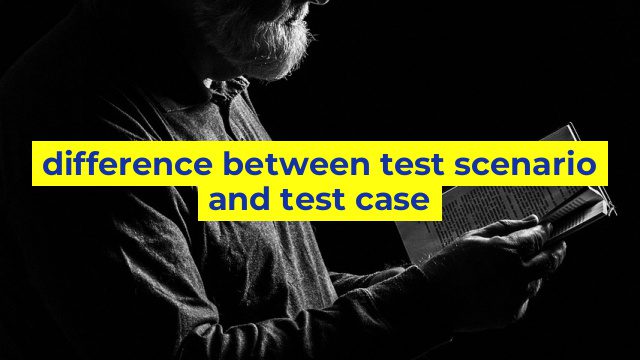The Difference Between Test Scenario and Test Case
When it comes to software testing, there are two important terms that are often used interchangeably, but in reality, they have different meanings. These terms are test scenario and test case. Understanding the difference between the two is crucial for the success of software testing, as it helps to ensure that all aspects of the software are thoroughly tested.
What is a Test Scenario?
A test scenario is a hypothetical situation that describes the end-to-end functionality of a software product. It lays out a sequence of events that a user would go through while using the software. Test scenarios are usually written in plain English and are designed to be easily understood by all stakeholders, including developers, testers, and business analysts.
Test scenarios do not go into the specifics of how the software should behave in each situation but rather focus on what the user would do. They help to identify the different paths a user may take while using the software and ensure that all possible scenarios are thoroughly tested.
What is a Test Case?
On the other hand, a test case is a step-by-step description of how to test a specific function of the software. Test cases define the inputs and expected outputs for each test, making them more specific compared to test scenarios. Test cases are generally created from test scenarios, with each test case testing a specific part of the scenario.
Test cases provide detailed information on what needs to be done, so they are typically written in programming languages such as Java or C#. Test cases make the testing process more precise and provide a clear path for the testers to follow.
The Key Differences
The key difference between test scenarios and test cases is that test scenarios are high-level descriptions of user interactions while test cases are specific instructions on how to execute a particular test. When a test scenario is created, it usually includes many different paths that need to be tested, while a test case typically focuses on one particular path.
Another difference is that a test scenario is created at the beginning of the software development cycle, usually during the requirements-gathering phase. In contrast, a test case is created during the testing stage of the software development cycle when the software is ready for testing.
The Importance of Both
Test scenarios and test cases are both crucial components of software testing. Test scenarios ensure that all possible scenarios are tested while test cases provide detailed instructions on how to execute the tests. Properly designed and executed test scenarios and test cases are essential in ensuring that the software is free of bugs and meets the requirements of the end-users.
In conclusion, test scenarios and test cases have different meanings, but they complement each other in software testing. Understanding the differences between the two is essential for creating successful test plans and ensuring the quality of the software.
Table difference between test scenario and test case
| Test Scenario | Test Case |
|---|---|
| A high-level statement that defines a feature or functionality to be tested. | A detailed description of a particular test or test step with inputs, actions, and expected results. |
| It sets the scope for testing by providing a broad understanding of what needs to be tested. | It describes a specific scenario or condition that needs to be tested, which is derived from the test scenario. |
| It focuses on the end-user perspective and the overall business requirements. | It is focused on verifying functional or non-functional requirements, identifying defects, and ensuring the quality of the product. |
| It helps identify a list of test cases that need to be created to validate the functionality. | It helps create a structured approach for testing by detailing the steps to be executed, expected results, and actual results. |
| It is usually created before the test cases to determine the scope of testing and to prioritize test cases. | It is created after the test scenario, and it usually contains the steps to be followed during testing. |

